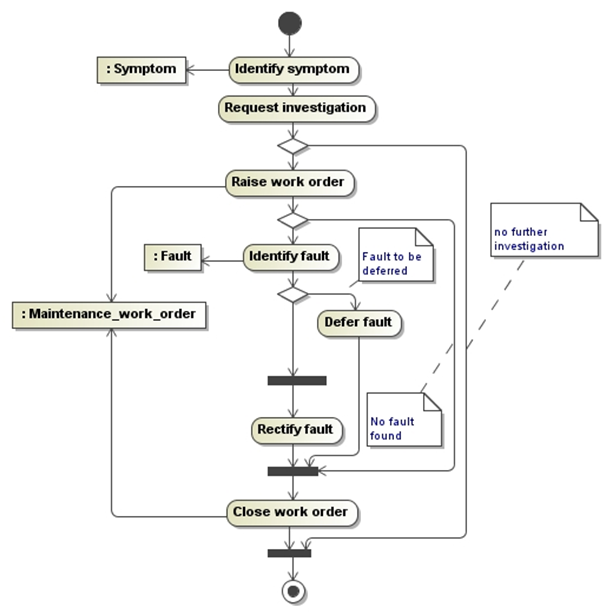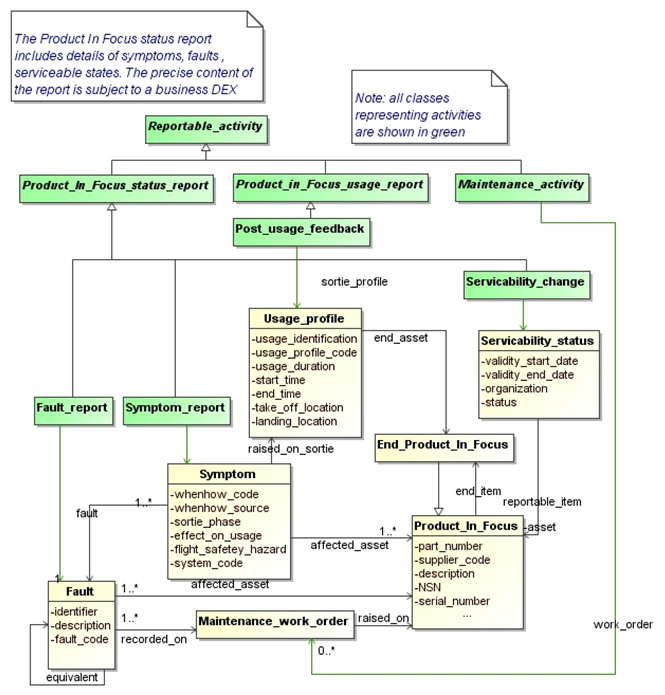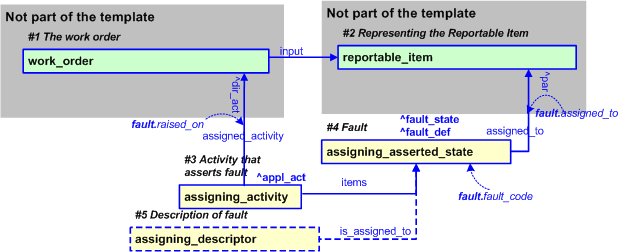Template:— fault (fault)
Context:— MoDAvDEX |
Date: 2008/02/03 07:53:25
Revision: 1.5
|
This section specifies the template fault.
NOTE
The template has been defined in the context of
MoDAvDEX.
Refer to the business context for details of related templates.
NOTE
An explanation of a template and the associated instantiation path is
provided in the
Template overview
section.
This template describes how to represent a fault.
The EXPRESS-G diagram in
Figure
3
shows the templates and EXPRESS entities that are required
to represent the template
"fault".
The text highlighted in blue shows the template parameters.
Figure 3 — An EXPRESS-G representation of the Information model for fault
The graphic for the template to be used in other EXPRESS-G diagrams
is shown in Figure
4
below.
Figure 4 — The graphical representation of the fault template
The following input parameters are defined for this template:
The following classes and their sub-classes can be used:
classifications: [ModAvDEX_fault_code]![[warning:]](../../../../../../images/dex/warning.gif) Error RDL4: The URI urn:plcs:rdl:LITS is not listed in dexlib/data/refdata/rdl_index.xml
Error RDL4: The URI urn:plcs:rdl:LITS is not listed in dexlib/data/refdata/rdl_index.xml
The reportable item exhibiting the fault
The following reference parameters are defined for this template:
%^target = $fault.appl_act%
Allow the
State_observed
entity instantiated in this path to be referenced when this template is used.
Note: The
State_observed
entity can be referenced in a template path by:
%^target = $fault.fault_state%
Allow the
State_definition
entity instantiated in this path to be referenced when this template is used.
%^target = $fault.fault_def%
The instantiation path shown below specifies the entities that are to be
instantiated by the template.
A description of templates and the syntax for the instantiation path is
provided in the
Templates Help/Information section.
/
assigning_asserted_state(
state_class_name=@fault_code,
state_ecl_id='urn:plcs:rdl:LITS',
assigned_to=@assigned_to)/
%^fault_state = $assigning_asserted_state.state_obs%
%^fault_def = $assigning_asserted_state.state_def%
/
assigning_activity(
role_class_name='Activity_input',
role_ecl_id='urn:plcs:rdl:std',
assigned_activity=@raised_on,
items=^fault_state)/
%^appl_act = $assigning_activity.appl_act%
The following section details how the
fault
template can be optionally characterized by assigning
other constructs to it. These are characterizations commonly
applied to the template. The ISO 10303-239 EXPRESS model may enable
other assignments to the entities instantiated by the template.
The following characterizations may apply:
Characterization Fault description
NOTE this characterization is optional.
If additional textual description of the fault is required, then it is represented by
the template #5
assigning_descriptor.



